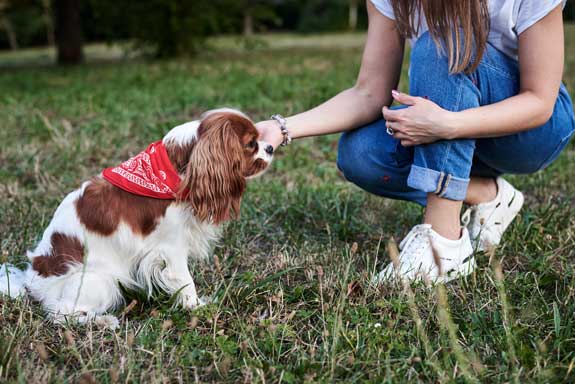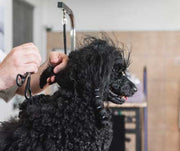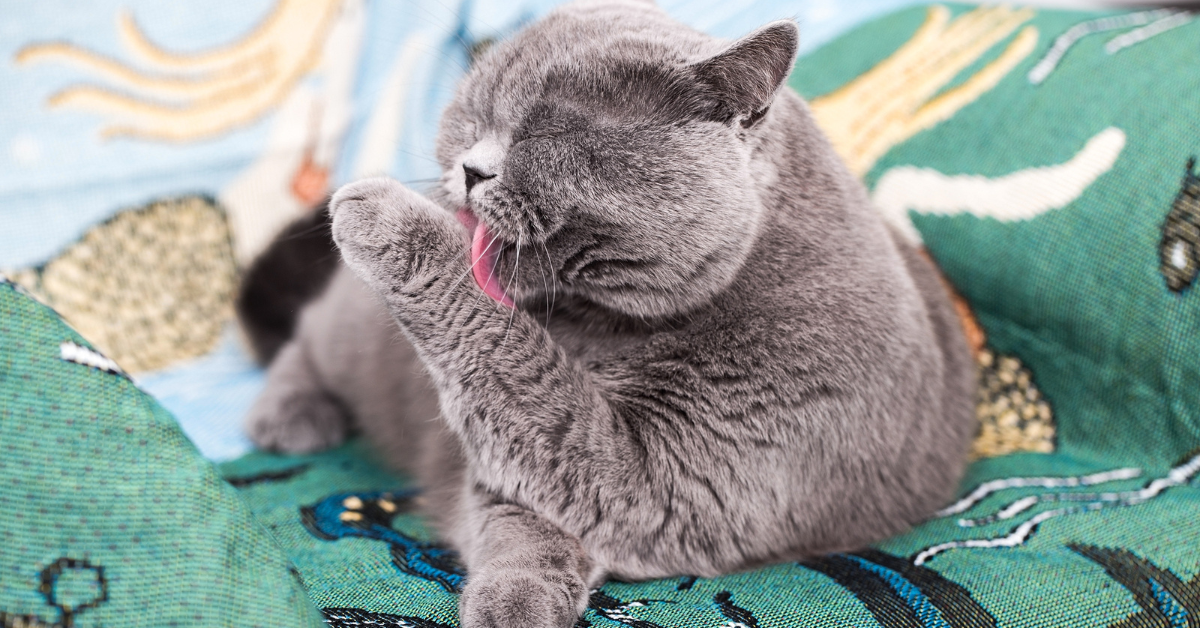Is There a Right Way to Pet a Dog?

Whether you're walking through your neighborhood, on a trail, or at a shopping center, chances are you'll encounter someone walking their dog. For those of us who love animals, our immediate reaction is usually the same: we want to pet them!
Alternatively, maybe you're a dog parent and have been contemplating the complexities of life as a dog. What is it like to receive affection from strangers through pats on the head and back rubs? Do dogs enjoy that?
This leads us to the topic at hand: is there a right way to pet a dog?
According to veterinarians, there is! Knowing the proper way to approach pet dogs is an incredibly useful skill. Learning the proper way to pet a dog helps keep you safe, as well as helps build a stronger bond between you and your pet.
AN OVERVIEW
While some of us may already be accustomed to extending our hand and immediately petting any dog, it's not a bad idea to learn the best way to approach dogs. We know that restraint can seem impossible, especially when we're floored by those adorable eyes and that animated, wagging tail. However, approaching and petting a dog with care can end up keeping you safe from bites, as well as establishing confidence and trust between you and the dog.
Each dog has a different response to human affection, with most of them valuing affection and companionship, which may probably leave you wondering, "How can there be a wrong way to pet a dog?"
In this feature, we will be discussing some of the tips you might find useful whenever you feel the urge to bend down and pet a dog. Let's get started!
THE VALUE OF PETTING
Petting a dog often promotes a robust and dependable bond between you and your dog. As you create this sort of relationship with your pet, they become accustomed to a safe environment, especially when you are around.
Another benefit of petting? You're helping to groom your dog! As you continuously stroke your dog's coat, you help remove some of their loose hair and reduce the chances of potential matting. You will also be able to see and identify potential injuries and health issues if you partake in regular petting sessions. This helps you spot potential risks and alerts you if you should have your pet taken to a licensed professional.
The benefits of interacting with your pet can also be physically and mentally stimulating for humans! Petting your dog can help relieve stress and anxiety, which is why it is quite common for dog owners to reach out to their pets after a hard day's work. Plus, it's 2020. A lot of people's stress levels are at an all-time high. We'll do just about anything to help relieve those stress levels! Certain studies have shown that people who interact with their pets are generally less stressed.
Petting a dog may also aid in the prevention of heart problems. Some international studies even go as far as recommending having a pet at home for individuals with heart conditions. Lastly, people who continuously pet their dogs tend to be in better emotional states, due to the endorphins released during interactions with your pet.
HOW TO PET YOUR DOG
Somewhat similar to humans, dogs have unique characteristics that make them who they are. Your approach to petting will be largely based on the individual dog and their preferences.
By understanding a dog's personality, you will gain a better understanding of how to approach them whenever you feel the urge to pet them.
For starters, it always helps to proceed and begin with a proper greeting. When a dog does not initiate contact, it's highly advisable not to pet him right away. If you see the dog backing away, he may be afraid, uncomfortable, anxious, or feel threatened.
When attempting to pet a dog that is not familiar to you, it helps to establish the fact that you are not a threat and that you mean them no harm. You can always invite the pup to approach you first, by kneeling and extending your palm. Observe if the dog obliges. Maintain a steady posture and avoid shaking or sudden movements. The last thing you want to do is startle the dog or trigger any other unnecessary reaction.

When the dog appears to allow you inside their personal space, you can proceed with gentle, soft strokes on the dog's side. Most dogs prefer to be touched on the side of the neck and the shoulder area. If a dog doesn't back up or appear startled, then you can proceed with petting on the chin or top of their head. Remember to keep the strokes and brushes gentle, and if the dog shows any hesitation, remove your hand and wait until the dog appears calm and comfortable again.
You should also know that there are some spots that some dogs may not like being touched, such as their legs, paws, tails, and sometimes their heads. Many dogs channel anxious energy when you try and pet the aforementioned areas. Please remember to proceed with caution when you are petting any new, unfamiliar dog.
When it comes to the belly rub, hold off. It may come off a bit confusing, as dogs can resort to this as a sign of submission. It's best to avoid rubbing the bellies of new and unfamiliar dogs. However, if your dog likes them, please proceed until your dog had enough.
It's also advisable to avoid direct or hard eye contact with unfamiliar dogs. To some dogs, it can appear as a threat.
THE WRAP-UP
Petting does have its benefits, and if done correctly, can be a building block to a long and healthy relationship with your dog.
We hope this feature was able to help, whether you've reflected on your petting mannerisms or are practicing how to approach neighborhood dogs.
Previous article

Next article

Related posts
View all-

5 Simple Tips to Make Sure Your Cat Drinks Enough Water
Ensuring your cat stays hydrated is important, but it can be challenging since many cats don't drink enough water. Dehydration can lead to kidney disease and other health issues. Fortunately, you can encourage your cat to drink more with a few simple changes. Read Article -

How to Keep Your Cat Busy at Night (So You Can Sleep)
For many cat owners, the quest for a good night's sleep while keeping their feline friends content and engaged can seem like a never-ending battle. Cats, naturally more active at night or early in the morning, often disrupt your sleep schedules with nocturnal activity, whether through playful nature or seeking attention. Read Article -

Should You Bathe Your Cat? Everything You Need to Know About Cat Hygiene
When it comes to cat hygiene, a common question among cat owners is, "Should you bathe your cat?" Understanding how to care for felines, especially bathing cats properly, is crucial for maintaining their overall health. Most cats are fastidious groomers, but specific scenarios like long-haired cats getting dirty or skin irritations, might require a bath.
Read Article



